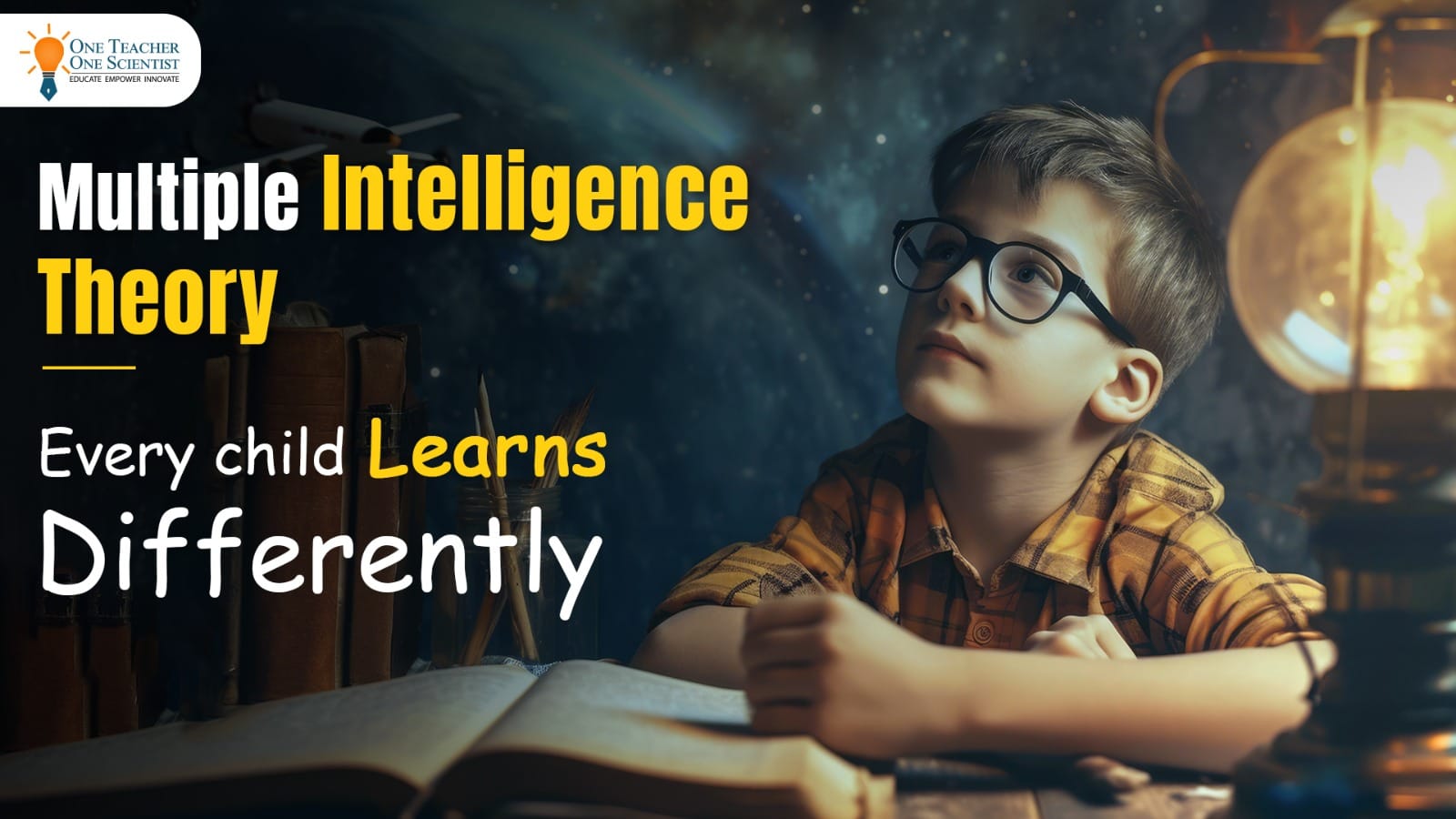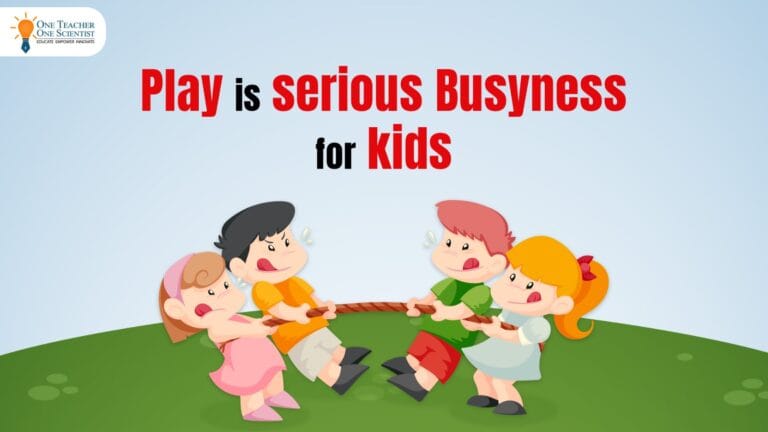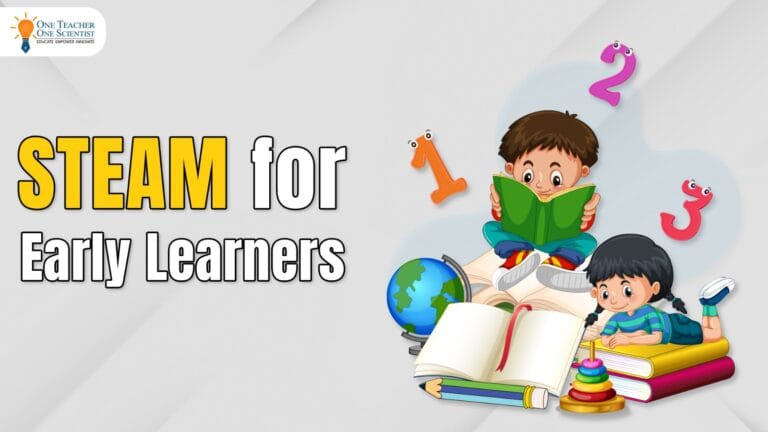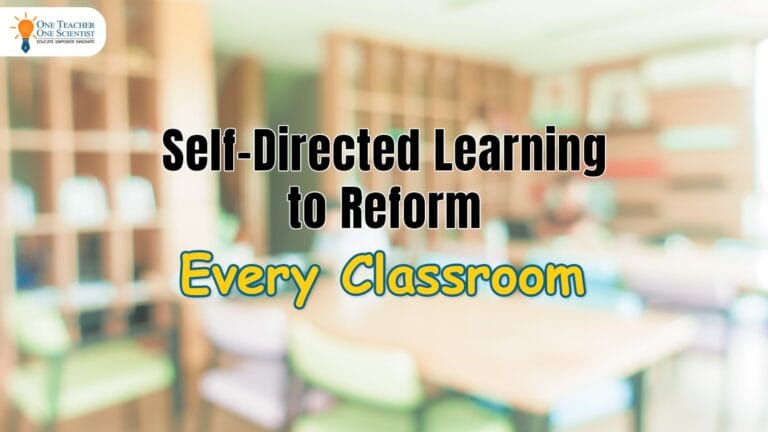The Theory of Multiple Intelligence was introduced in 1983 by Professor Howard Gardner. Since its introduction many educators have practically used this theory to design practical teaching learning approaches for a wide and divergent group of learners. This theory has played a critical role in the way the education fraternity approaches pedagogical approaches in classrooms. The theory of multiple intelligence has led to multiple interventions that have been useful in creating learning resources and restructuring lesson plans to meet the needs of children with diverse learning styles and has sparked interest in understanding learning patterns of children.
The Theory of Multiple Intelligence has played a major role in creating suitable learning experiences for all types of learners and this has especially been useful for children who rely heavily on creative ways of learning. Where teachers seriously map the learning styles of children to their various types of intelligences they possess, much success has been noticed in personalised and self-directed learning. This has led to significant enhancement of teaching methodologies where tailor made solutions and learning experiences to suit diverse student needs are being provided to children. The theory has also failed the unilateral measure of intelligence called IQ tests, which has been the single most yardstick for measuring Intelligence for a long, long time.
Key Types of Intelligences
In his Theory of Multiple Intelligences, Howard Gardner identified eight kinds of Intelligences that get expressed by an individual in one or many of the following ways.
- Linguistic Intelligence: This is linked with a keen sensitivity towards language: both spoken and written word.
- Logical-Mathematical Intelligence: Those with a unique ability to analyze problems and perform mathematical operations or approach situations in a logical and sequential manner
- Spatial Intelligence: Potential to recognize and manipulate the patterns of wide space and more confined areas.
- Kinaesthetic Intelligence: The ability to use the body well, shows physical skills and manipulate objects well.
- Musical Intelligence: The ability to perform, compose, and express in musical patterns.
- Interpersonal Intelligence: The ability to understand and interact effectively with others.
- Intrapersonal Intelligence: This refers to the capacity to understand oneself and one’s thoughts and feelings.
- Naturalist Intelligence: The ability to recognize and categorize plants, animals, and other aspects of nature.
- Spiritual Intelligence: The ability to look at things deeply and have an introspective approach towards everything.
Each of these types of intelligence as per Gardner’s Theory of Multiple Intelligences represents unique approaches on how people interact with the world. This also points out to the relevant fact that Intelligence is not a linear attribute and it is a highly personalised capacity, which we cannot group as a one-size-fits-all attribute.
The Role of Multiple Intelligences in Pedagogy
The fact that educators world over have embraced the theory of of multiple intelligences highlights that it is well acknowledged that we also recognize that students learn in many diverse ways. Hence an overly structured unidirectional approach can be a huge disaster in pedagogy. We need to transform ways in which learning is approached in classrooms. Keeping this theory in mind, teachers need to make efforts in personalising the lesson plans to a certain extent to create more inclusive and effective learning environments.
For example, for a more kinaesthetic learner, experiments and physical contact with the environment as proposed by Howard Gardner Multiple Intelligences might be a better approach while teaching lessons while a musically intelligent child might find sound based and rhythm based lesson plans more effective in learning the same topic.
Gardner’s theory can help teachers design the right pedagogical approaches for each child based on the intelligences he or she exhibits, thereby ensuring powerful learning outcomes with every classroom intervention.
Multiple Intelligences in STEAM Education
Let’s see how Gardner’s theory is helping create powerful interlinked pedagogies. STEAM education is one such methodology which integrates science, technology, engineering, the arts, and mathematics. It provides a fertile ground for applying Gardner’s Multiple Intelligences. In a STEAM lab, activities are designed to appeal to a range of intelligences. Let’s take building models as an example. Suppose you ask children to build a model of a bridge. Now such a project would involve multiple intelligences in different ways. The logical-mathematical and spatial skills would need children to analyse the size and structure of the bridge. The bodily-kinaesthetic intelligences would lead to actually putting the model together, while designing the aesthetics and look and feel of the bridge could engage naturalist and visual-spatial intelligences.
OTOS and Support for Multiple Intelligence in STEAM Labs
Howard Gardner’s Theory of Multiple Intelligence is kept in mind at the fundamental level while creating teaching and Learning resources at One Teacher One Scientist (OTOS). Our STEAM based products are specifically designed to stimulate students across all forms of intelligence. The STEAM Activity Cards have projects and activities that use the concepts of the real world in a manner that all the different types of learners, from Linguist to a Kinaesthetic, to an Intrapersonal and Interpersonal learner are stimulated and developed. For example: Asking children to physically check and observe their home pipeline system and redrawing a sketch of it could involve the Logical, mathematical, spatial and Bodily Kinaesthetic Intelligence. Then asking them to talk about how the entire water system must be helping the life of its inmates would make children ignite their Intra personal and interpersonal skills. Asking children to find out the leakage points in the entire pipeline system could also instigate thinking at various levels and domains.
Such integration of subjects and Multiple Intelligence Theory could help children ignite their inner strengths and make learning real, authentic and meaningful.
This multidisciplinary approach also prepares students for real-world problems which often require multiple types of intelligence to solve.
The practical application of Howard Gardner’s Theory of Multiple Intelligences in educational settings, particularly within STEAM labs, has the power to transform pedagogy. By acknowledging and incorporating various types of intelligence into teaching methods, we can create powerful lesson plans and can align teaching and learning to a broader spectrum of learning styles. Aligning teaching to diverse learning styles can also foster a learning environment that is diverse, more dynamic and personalised. Implementing such practices, have the potential to enhance student engagement and learning capacities to a limitless level.




